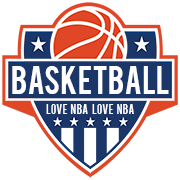
Unlike most models, my data isn’t based on advanced analytics like PER or LEBRON. It’s based on NBA awards (all-star, all-NBA, all-rookie, etc) so I take into account more context. I’ve tracked every single draft pick since 2016, here are the results, [full results and methodology can be found here](https://medium.com/@JourneytoaGM/courting-success-ranking-nba-teams-by-drafting-prowess-97d44b0f0dcb). LMK what you think!:
​
​
|||||||
|:-|:-|:-|:-|:-|:-|
||Ranking|Team|Total score|First round| Second round|
||1|Raptors|145.34|121.15|282.41|
||2|Spurs|66.23|68.06|55.86|
||3|Heat|60.37|53.77|97.76|
||4|Lakers|51.07|36.13|135.76|
||5|Nets|37.74|41.35|17.26|
||6|76ers|33.56|27.98|65.17|
||7|Rockets|32.92|27.23|65.17|
||8|Jazz|32.46|35.88|13.03|
||9|Grizzles|31.82|32.61|27.34|
||10|Thunder|27.38|27.10|28.96|
||11|Bucks|25.27|6.73|130.34|
||12|Blazers|25.14|23.83|32.59|
||13|Mavericks|24.56|13.96|84.61|
||14|Nuggets|23.03|15.60|65.17|
||15|Cavs|21.49|13.78|65.17|
||16|Timberwolves|18.58|10.35|65.17|
||17|Pelicans|18.23|17.90|20.09|
||18|Clippers|17.88|17.75|18.62|
||19|Hornets|17.75|13.88|39.72|
||20|Bulls|17.17|8.70|65.17|
||21|Hawks|14.88|17.51|0.00|
||22|Celtics|14.14|16.64|0.00|
||23|Kings|14.02|16.49|0.00|
||24|Warriors|13.88|16.33|0.00|
||25|Knicks|13.50|10.14|32.59|
||26|Suns|12.81|11.23|21.72|
||27|Magic|12.42|14.61|0.00|
||28|Pistons|9.79|8.23|18.62|
||29|Pacers|9.54|10.01|6.90|
||30|Wizards|6.21|7.30|0.00|
^(Table) ^(formatting) ^(brought) ^(to) ^(you) ^(by) [^(ExcelToReddit)](https://xl2reddit.github.io/)
​
Methodology
The methodology for measuring the success of a single draft pick is based on the player’s performance adjusted for where they were taken in the draft. The model takes into account every draft pick made since 2016. We had to pick a year to cut off the data and 2016 seems reasonable because that’s approximately when modern basketball began to take shape in terms of 3pt shooting, spacing, switching defense, etc
Measuring Player Performance
Traditional models often use advanced metrics like Player Efficiency Rating (PER) or [LEBRON](https://towardsdatascience.com/which-nba-teams-are-best-at-drafting-20070ccd1702) to gauge a player’s value. However, I believe that these metrics alone are too limiting. They often miss context and overall, it’s almost impossible to capture an entire player’s value with one number. Instead, I opted for a points system that uses end-of-season awards voted on by the media to determine what category bucket each player falls into. This is the multiplying factor (M) and it is categorized as the following:
1 = The player signed a second contract in the NBA with at least 50% in guaranteed money
4 = The player made an All-Rookie team and signed a contract extension with their original team
12 = The player has made an All-Star team
17.15 = The player has made an All-NBA team
These rules create a structure for the model but I was able to adjust for clear exceptions. For example, Micheal Porter Jr. has never made an All-Star team and wasn’t selected to an All-Rookie team so the model originally gave him a score of 1. However, he is clearly a much better player than that and on par with all other players who were on the All-Rookie team for this draft class. As such, I have overridden the model to give him a score of 4. There were a handful of these expectations throughout.
The scores themselves were decided by the percentage of players in the NBA that generally fit into each of the preceding buckets. For example, Since 2016 of all the players to make the All-Rookie team, ⅓ of them have become All-Stars. Thus the model weights a player who made an All-Star team as 3x as valuable as an All-Rookie Player. A similar calculation was done for each of the other buckets.
by Designer_Ad4086



7 Comments
Sucks that the linked article is behind a paywall so it’s hard to understand what you mean by based on awards (really only dejounte among our picks has a significant award: all star). But i’m not really surprised contrary to your headline. It’s much harder to hit on picks later into the draft vs in the lottery, and spurs have been really good at those later picks, which i’m assuming is boosting their position, as opposed to teams who have drafted good players with higher lottery picks
It’s funny that the #1 team here had to trade for a Spur to win their only championship.
I’m not sure why this surprised you. San Antonio has consistently produced more value than is typical with their late and mid first round selections. They’ve had very few blatant misses, and most of their selections in a range where it’s rare to find a rotation player, have gone on to have productive careers.
Our struggles this year have really just made it clear to me how few NBA fans, or Spurs fans in this particular case, really understand the nature of the draft, the nature of what makes a draft pick good, and what proper expectation should be when trying to evaluate past selections.
If all you do is dig through every single draft and make a list of the players who are better than whoever the Spurs got that season, you’re going to be unhappy 99% of the time.
But if you stop comparing each of their selections to whoever was the outlier/ steal of that particular draft, it becomes very clear that San Antonio is damn consistent at finding productive players within the limitations of past draft spots.
Most other franchises aren’t. Sure they’ll pull a out of nowhere late first round or second round steal that turns into a genuine star or a player better than anyone the Spurs have drafted recently once in a while.
But So many of them will follow that up with Dud after dud after dud.
The unfortunate reality is with the Spurs having such a large portion of there young core built around late first round/ mid first round picks they would have to have had a couple super outliers for the position drafted in order for this to be anything close to a playoff caliber roster.
But San Antonio has had so much less high-end draft collateral to work with then pretty much every other really young/ rebuilding roster in the league
They will get there in time and adding two more lottery picks to this nucleus will do wonders, particularly with how good are front office is at maximizing value
Very interesting read, thank you for sharing!
Let’s go Suprs!
Makes sense we’d rank so high w the cut off being 2016. That’s the start of the run of DJ, Derrick, and KJ all being picked at 29 in three out of four drafts
Insane to hit as high on all 3 picks as they did that late in the first round
Unsurprisingly you mean, we’ve been great at drafting.